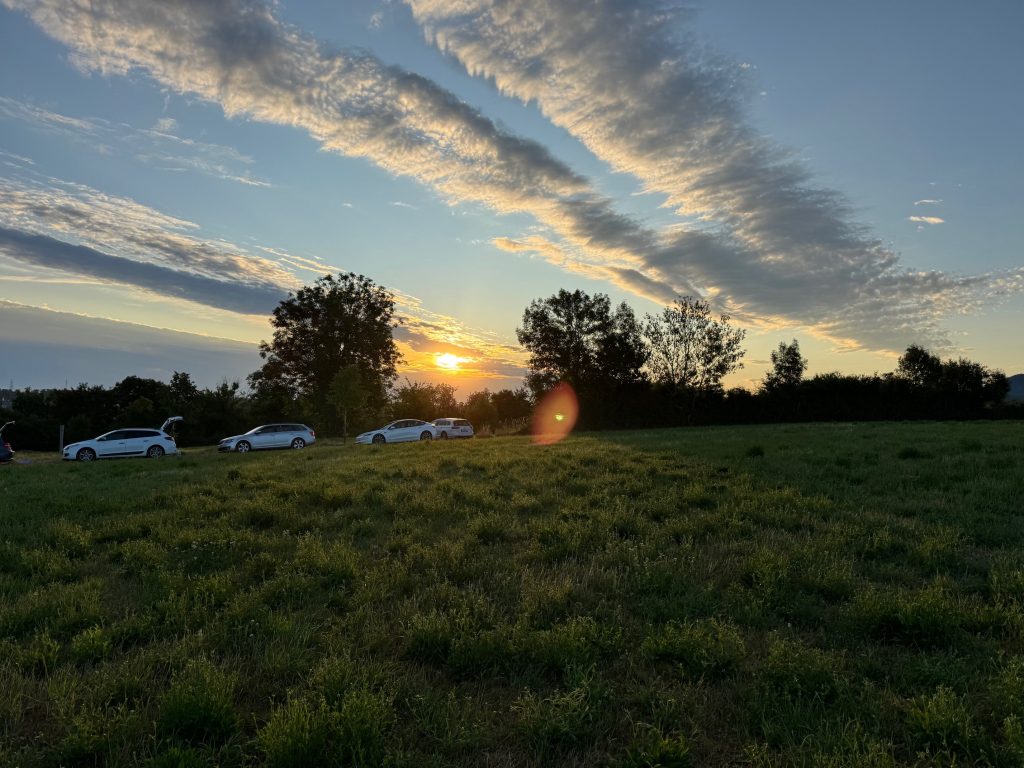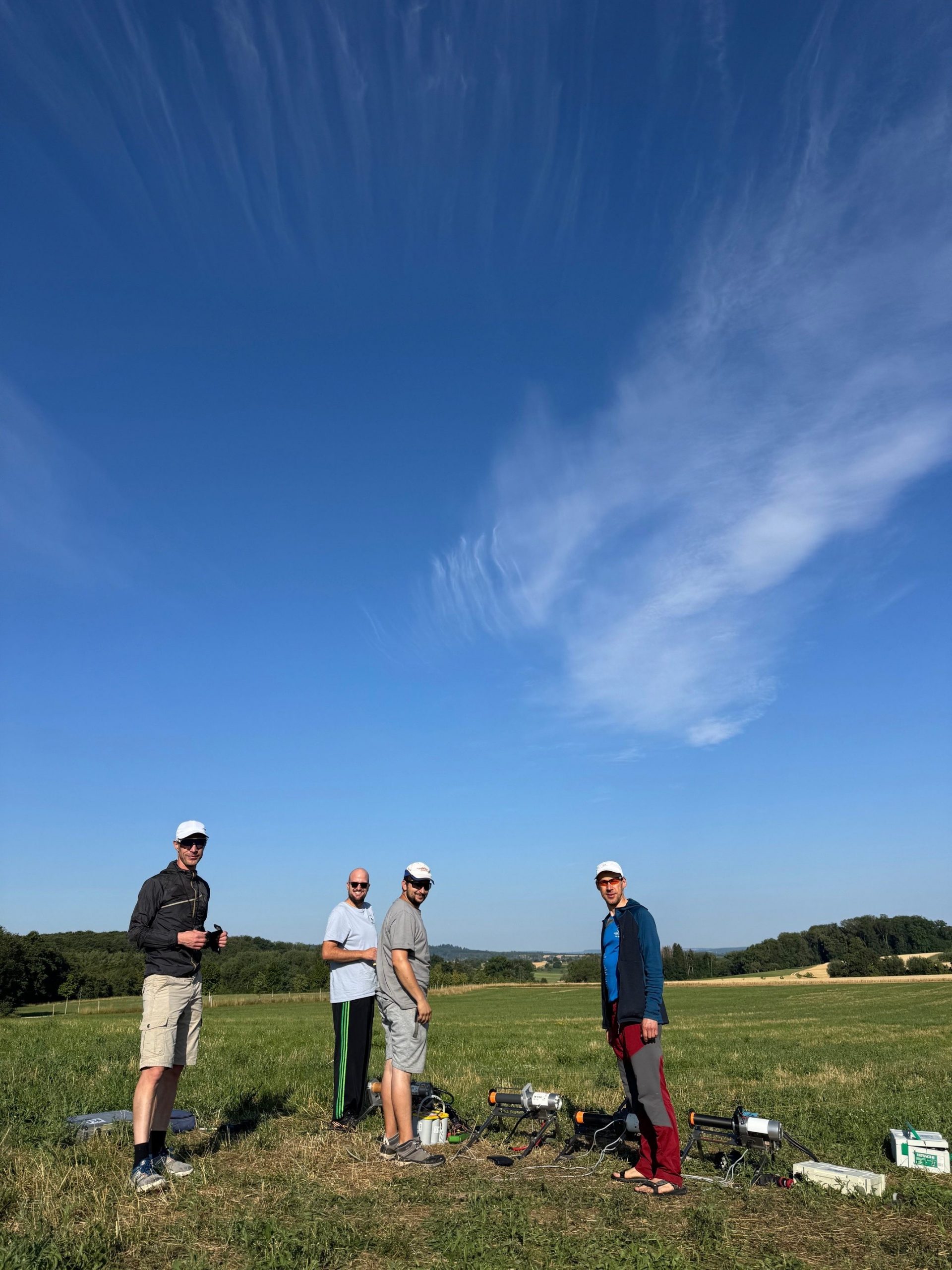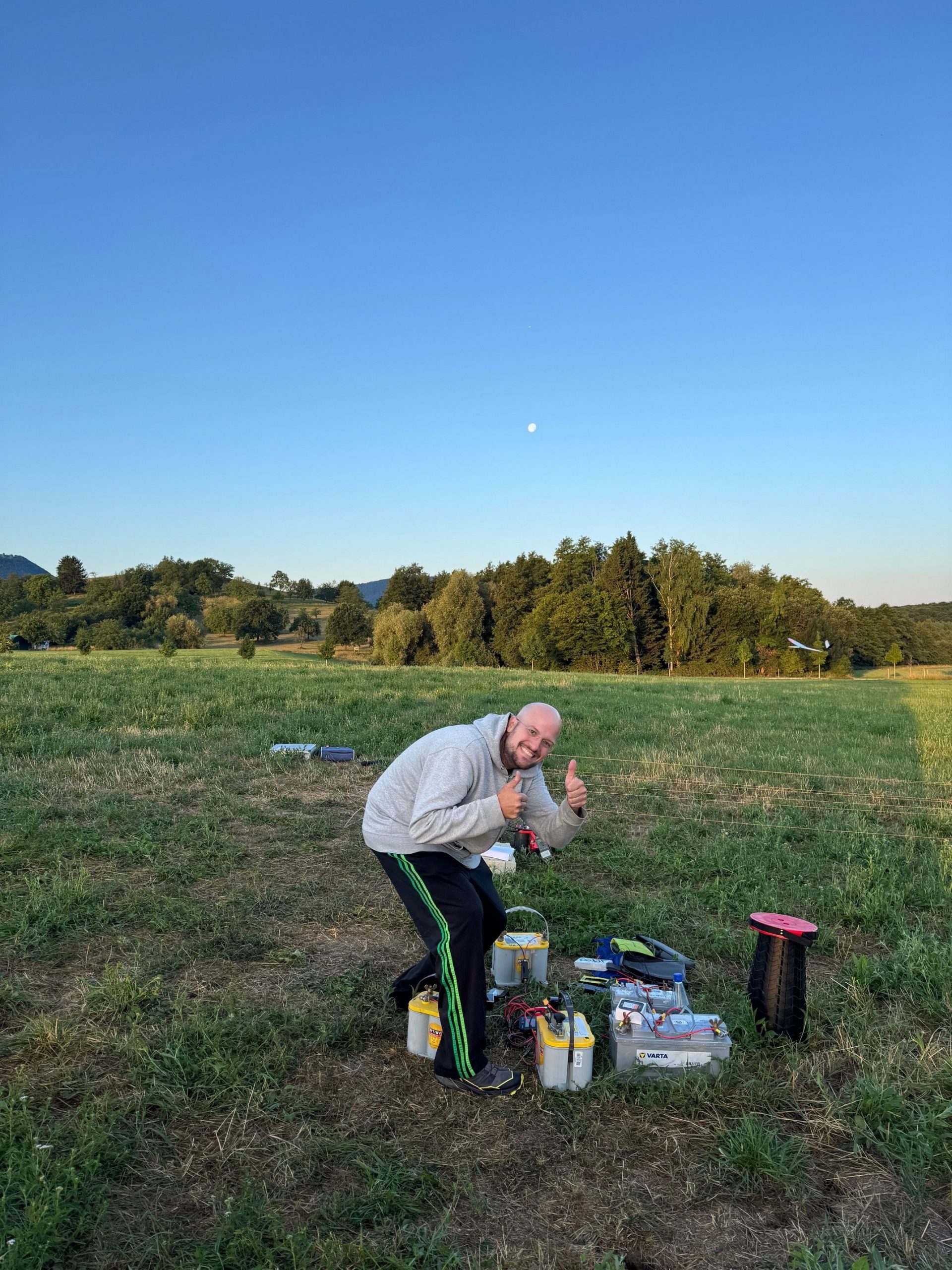Team Germany is, of course, hard at work preparing for the 2025 F3B World Championships! We recently managed to organize a two-day training camp with most of our pilots to test and select winches, batteries, and provide some much-needed helper-pilot training.
Focus on Equipment and Communication
Our first focus was on the winch setup. With Matthias joining as a wildcard, we now have more pilots than ever—but still the same number of winches. That meant we needed a consistent and reliable hardware setup for everyone. After my first World Championship experience in 2023 (where I was also responsible for the winches), I really wanted to dive deeper into understanding how well the equipment performs under real conditions—and to make sure it’s safe and dependable in every way.
Of course, we also wanted to identify the best motor-battery combinations for the upcoming Worlds, test the rest of our equipment, and get in some quality training flights.
Saturday: Testing, Measuring, Launching
We set up all six relevant winches early on a sunny, warm Saturday morning in mid-July. The goal: identify the four best units. First, we aligned the winches and fine-tuned their electrical resistance to ensure a fair comparison. As a bonus, we were able to measure the internal resistance of the batteries, allowing us to match them more effectively to the winches.
All WC pilots then flew each of the six winches, trying to assess performance based on launch altitude. As you can imagine, with several pilots rotating through six winches while logging data, the process took time. After roughly 70 launches, we wrapped up around 8 PM with solid results—and a well-deserved BBQ at Steffen and Judith’s place to plan Sunday’s agenda.
Sunday: Early Starts and Final Decisions
We still hadn’t narrowed down the final winch selection enough. The altitude data had too much variance to clearly pick the best. So, we decided to go all-in:
We arrived at the field around 5:00 AM—45 to 60 minutes before sunrise—to take advantage of the calm, thermal-free air. Since the winches were already calibrated the day before, we ran a few quick checks, then focused on getting as much precise launch altitude data as possible. By 9:00 AM, just as the rising sun began influencing conditions, we had completed another 50 quality launches.
After a long day, a short night, and a very early morning, we finally selected our winch setup for the World Championships in Nardt.

Was It Worth It?
Yes—and no. The performance differences between winches were small. But we gained a better understanding of the winch system and, more importantly, had the chance to run many Speed and Distance flights, focusing on helper-pilot interaction. In the end, that probably helped us more than the winch selection itself.

Lessons Learned
One major challenge during the training was keeping the launch batteries charged. While the recharging process worked reliably, it took a lot of time—and required a large power source.
With more than 120 launches over the weekend, we gained a lot of confidence in the reliability of our winches and in everyone’s familiarity with their operation. The only issues we found were minor cosmetic ones, which we’ll easily fix before the World Championships „at home“.
Special Thanks
A big thank you to MCM München and Reinhold Krischke for lending us the current clamp and winch tester—we couldn’t have done this without your support!
-C.Rieger

